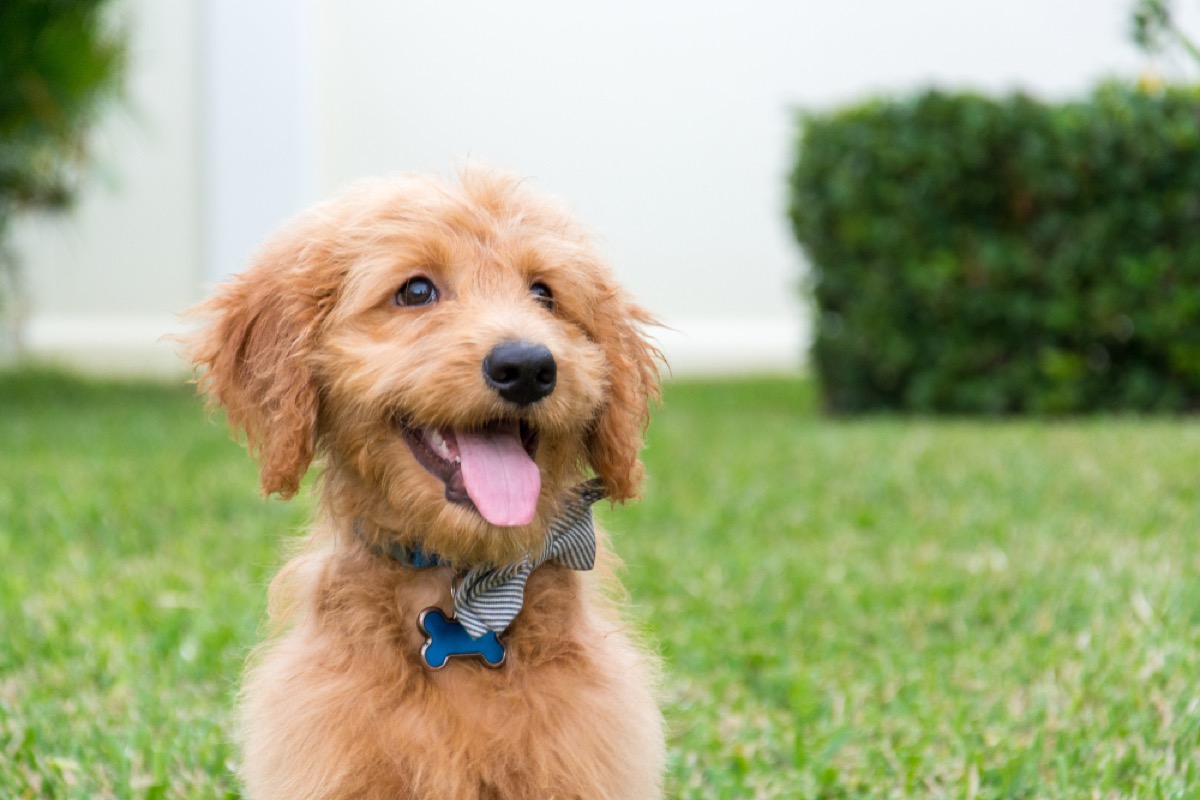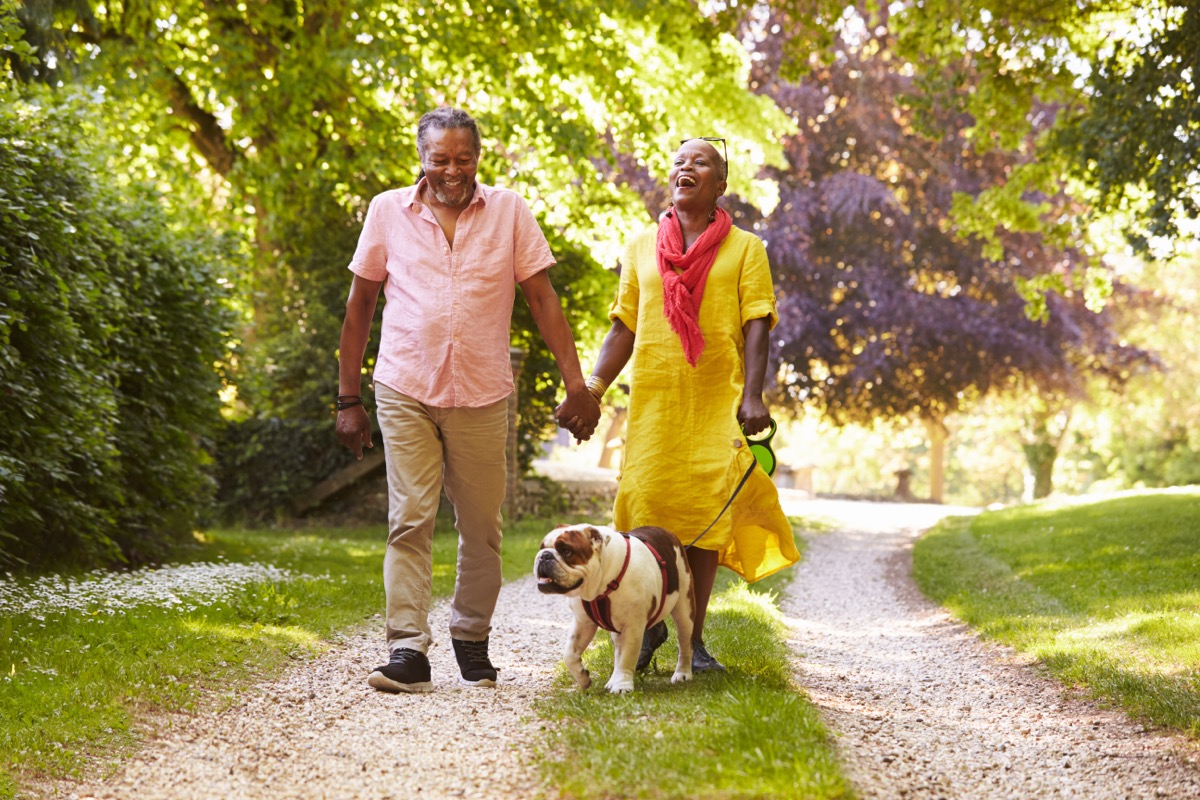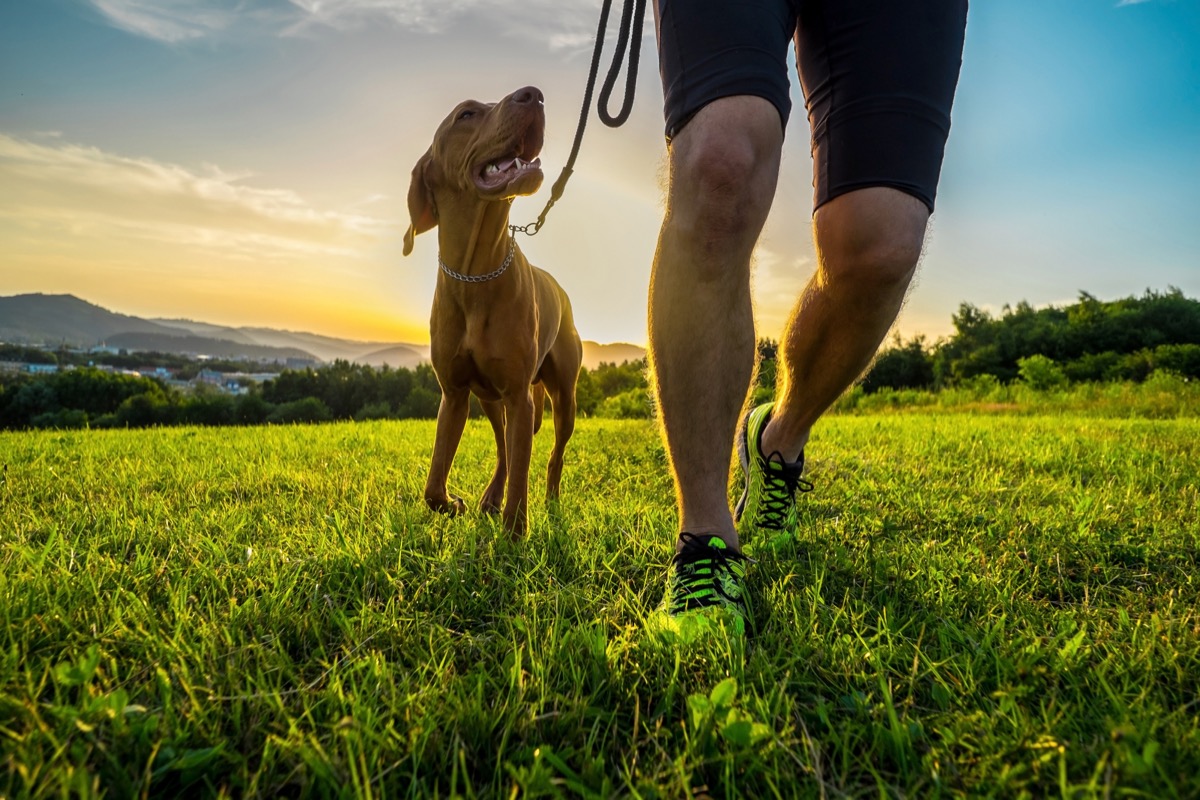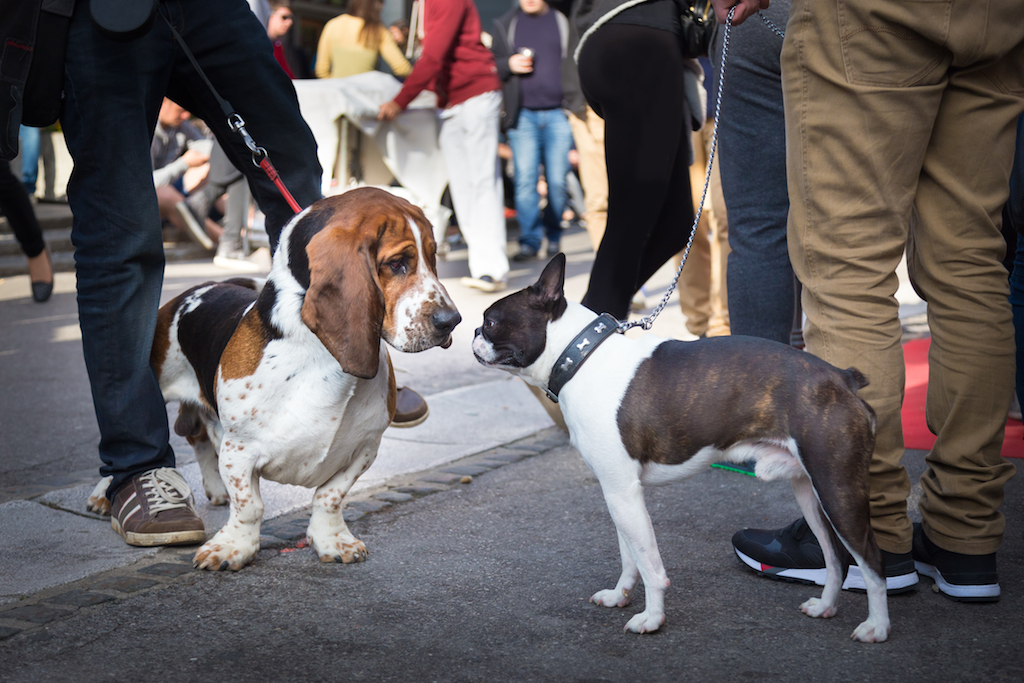Dog Trainer Reveals the 5 Worst Things Owners Do and How to Fix Them

Even if your dog attended puppy school, there have probably been times you wished you had a trainer on hand to help you deal with certain behaviors, like Fido not responding consistently to a command, pulling on the leash to chase another animal, or not figuring out the next trick you’re trying to teach them. But thanks to social media, it’s easy to find solutions to many of these issues. Ahead, learn about the biggest mistakes a dog trainer sees owners make that cause her to “cringe.”
RELATED: Cesar Millan Says You Should Never Walk Behind Your Dog—Here’s Why.
1
You repeat commands over and over.

Dog trainer @ingrid.pups explained in a TikTok video that when she uses the word cringe, “it’s not from a place of judgment. It’s from a place of sympathy and understanding, and knowing that with a few tweaks, a situation could be easier for everybody involved.”
The first situation she points out is when a dog doesn’t respond to a command and owners repeat it over and over.
“So, for example, [an owner will] want the dog to sit, and they say, ‘Sit,’ and it doesn’t do it; so they say, ‘Sit, sit, sit.'”
She says she understands the logic but that it decreases the value of the word for your dog—and that they’ll learn to keep waiting for you to ask them to do the command several times.
“Rather than repeating that command, you want to say it once, use either your leash or a treat or something where you can guide the dog into the position,” she says. Then, acknowledge that they’ve made it into the final position with praise.
2
Calling your dog with a harsh tone.

We all know the experience of calling our dogs to come and having them ignore us. In some cases, it can cause you to become frustrated and take on a more aggressive tone or move toward your dog while calling them.
“Moving into your dog’s space is sometimes going to elicit a play reaction,” says Ingrid. “Or, moving into a fearful dog’s space is going to cause them to move away.”
“You need to be more exciting than the thing your dog is interested in—which does not involve a harsh tone,” she explains. Use an upbeat voice and a backward motion. “If you’re frustrated and you’re displaying frustration in your tone, that’s not going to be appealing for your dog,” she notes.
RELATED: Why You Should Never Stop Your Dog From Licking You.
3
Asking your dog to stop and sit when they’re responding to a trigger.

Say, for example, your dog sees another dog across the street and starts barking. Do you ask him to sit to calm him down? Ingrid says that’s the wrong move.
“You want to get your dog moving and engaged with you,” she says. “If you put your dog in a sit, that allows your dog to just fixate on their target, and it also creates an association that something’s happening when they see this thing.” Ignoring the trigger is the better option.
4
You let your dog pull on the leash.

Teaching your dog to walk properly on a leash requires time and patience—but it can be done. Ingrid has a simple tip: “It’s extremely important to not allow them to put continuous pressure [on the leash] while moving forward.”
As she’s walking a dog, she gives them a loose leash when they walk by her side. “But the second he hits the end of the leash and there is tension, I stop my body and give him some body cues to come back to me, and then we continue on our way.” Repeat the process as many times as you need per walk.
RELATED: I’m a Dog Trainer and I’d Never Own These 5 Breeds “Unless My Life Depended on It.”
5
You allow dogs to meet nose to nose on their leash.

It’s probably a common occurrence if you live in a densely populated area or go to the dog park: You see a neighbor walking their dog and allow your dogs to approach each other on their leashes to sniff. But according to Ingrid, you should skip this behavior.
“I like to use the comparison of putting yourself in your dog’s shoes,” she says. If you’re being walked by someone else and have no autonomy over where you go, you may get anxious if the person walking you approaches someone else.
Ingrid says it’s the same for dogs. “Those fast waggy tails and that barking behavior is anxiety—that is not excitement,” she explains. She advises clients to avoid unknown dog interactions. It’ll help your dog feel more confident and relaxed—and less like they have to constantly scan the area.